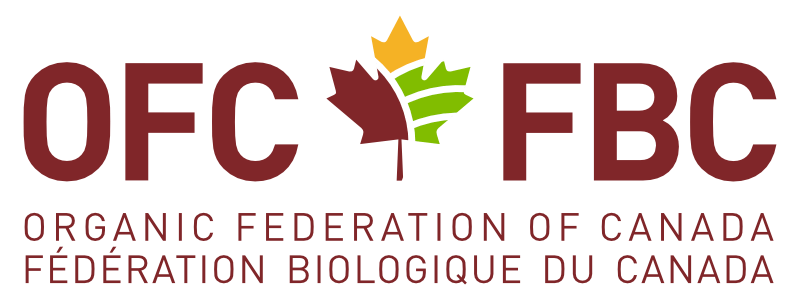By Sean Smukler
Faculty of Land and Food Systems, University of British Columbia
Economic and environmental goals: can organic farmers tick both boxes when it comes to nutrient management? Undersupply of nutrients can result in reduced crop yields and income. Nutrient management is one of the primary reasons that organic farms, particularly those producing vegetables, have lower yields than non-organic farms. At the same time, applying nitrogen (N) or phosphorus (P) above what the crop can use can result in nutrient leaching and runoff into water resources, contribute to poor air quality and emit climate-changing greenhouse gases. Managing this trade-off is difficult given that outcomes can vary widely with the types of amendments organic farmers have access to, their climate and soil conditions.
There’s a lot more to consider than simply adding compost to vegetable beds each year. It’s important to know how much N and P are required (how much the crop will remove from the soil) and how much N and P an amendment contains. We devised a promising strategy (Low Compost + N) that allows farmers to balance good yields with environmental stewardship.
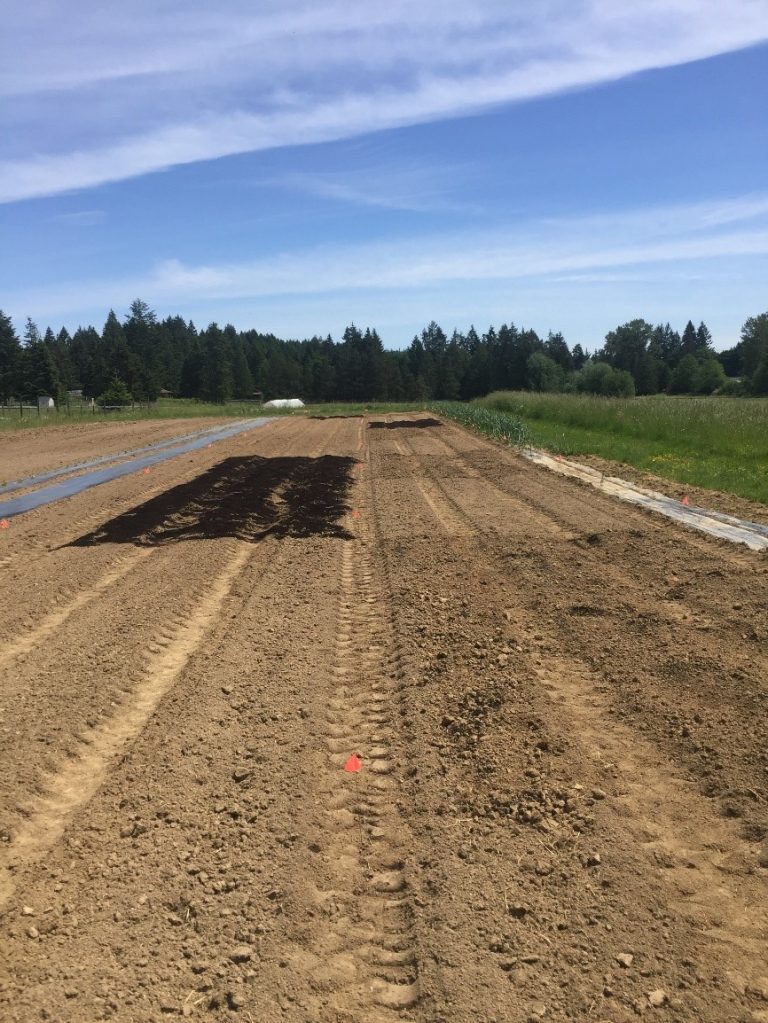
The Complexity of the Problem #
There is often a mismatch between the ratio of N to P that the crop requires and the ratio in compost or manure. For example, the ideal ratio of N to P needed for potatoes is 6.1 and 7.6 for spinach, while the ratio supplied from manures may be as low as 1.3, and 0.6 for compost. The result of this mismatch is that, over time, farmers applying compost or manure to meet the crop’s N needs will be building up soil P, which, could eventually exceed environmentally safe levels.
To further this challenge, the rate at which the total amount of the N found in amendments mineralizes to plant-available N can vary widely. For example, laboratory incubations of composted poultry manure have shown that the amount of the total N that is mineralized over a season can range from 3 percent to 37 percent.
Mineralization rates are largely determined by the carbon to N ratio of the amendment but also the soil type, temperature and moisture. Accurately matching the supply of nutrients to the crop needs therefore requires not only knowing how much plant-available N and P is contained in the amendments, but also an estimate of how much is likely to be mineralized during the production season. With this information, farmers can use permitted fertilizers to make up for any imbalance in the N to P ratio.
Ideally, much of the N and P applied to a field would be cycled on-site using nutrient-scavenging cover crops over the winter. N could also be added to the system through N-fixing cover crops (rather than by adding amendments). In BC, however, effective cover cropping is difficult. There is a short window of time for farmers to get them established, the cool winters limit N fixation and biomass production, and the migrating waterfowl can completely devour cover crops.
Finally, the cost of compost, manure and organic fertilizers varies widely across the province depending on their regional availability. This multitude of factors means that effectively addressing nutrient management trade-offs is a complex task and the best solutions will vary widely by region.
Measuring Trade-Offs Through Controlled Experiments #
To investigate the economic and environmental outcomes of nutrient management strategies on organic vegetable farms in BC, the Sustainable Agricultural Landscapes Lab at University of British Columbia (UBC) launched a study with the support of the Organic Science Cluster 3
in 2018. Post-doctoral fellow Dr. Kira Borden led the establishment of a controlled experiment on two working farms (“mother farms”) with distinct management histories and soils. The UBC Farm in the Fraser Valley is on coarse-textured soils and Greenfire Farm on Vancouver Island on fine-textured soils. At each site, four treatments were established in replicated plots (Table 1). Potatoes were grown in the first year and cabbage and cauliflower in the second year.
There were larger yield gains (yield compared to control) for potatoes under High Compost compared to Low Compost+N, but no differences between nutrient management strategies for the brassicas. Potato yield gains were more pronounced at Greenfire Farm than at UBC Farm. We also consistently observed more efficient use of N with Low Compost+N, which resulted in about 20-100 percent of applied N being recovered (taken up) by the crops, while less than 20 percent of N was recovered in the High Compost plots. This trend was mirrored for P recovery but with some crop-specific exceptions at UBC Farm.
Table 1. Four nutrient management strategy treatments repeated in 2018 and 2019.
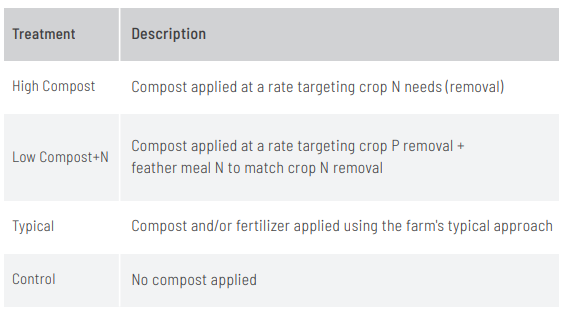
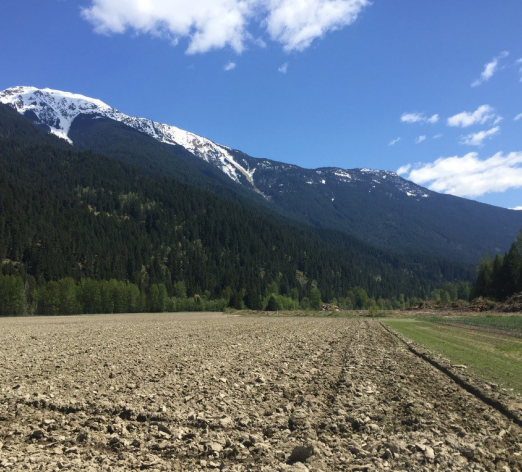
Evaluating the Trade-Offs in Different Regions #
To evaluate how economic and environmental trade-offs of different nutrient management strategies vary by soils, cli- Plot establishment at Greenfire farm on Vancouver Island, British Columbia (Submitted photo) mate conditions and costs of nutrients, we established field trials on 20 mixed vegetable farms (“daughter farms”) across three regions of southwest BC. These trials were led by Master’s student Amy Norgaard.
At the daughter farms, we compared the same treatments as at the mother farms (Table 1) but without a control, which could have led to lower yields for the farmers. We found no consistent differences in yields when all three regions were taken into account. The exception was in the second year, in the Fraser Valley (a region
characterized by inexpensive, high-nutrient content composts and soils high in P), we observed greater yields in High Compost than Typical. We also found no consistent differences in input costs except for the Fraser Valley where Typical was the lowest.
Overall, we observed 21 percent higher levels of P left behind in the soil with High Compost than Low Compost+N. We also found that High Compost resulted in elevated soil nitrate levels after the crop was harvested at farms using high-N compost (sampled 0-30 cm deep in the soil). These extra nutrients left behind in the
soil could be cause for environmental concern if there is no cover crop planted to recover them.
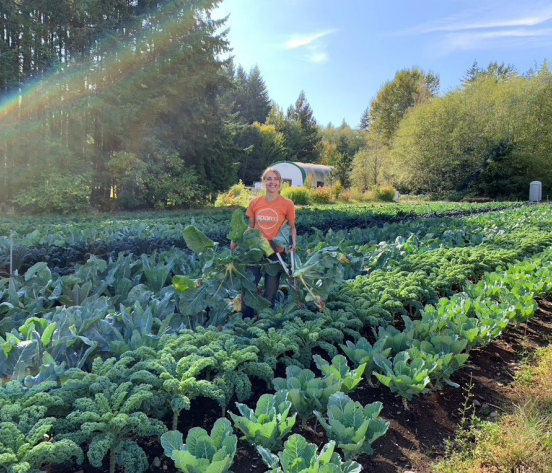
Conclusions and Next Steps #
Results from our mother farm trials clearly showed more efficient use of nutrients with Low Compost+N. Using this approach can minimize the trade-offs between economic and environmental objectives. Results from the daughter farms were similar, but our findings were less definitive because of variability among the different regions and in the farm management. The daughter farm analysis confirmed that ineffective nutrient management results in increased environmental risk (due to potential nutrient loss), but also that many organic farmers in BC are already managing these trade-offs effectively. The detailed economic analysis we
have underway will help to evaluate these potential trade-offs. An important caveat: the nutrient management strategies that we used are expected to slowly change soil properties such as P and organic matter. It will be important for future research to assess the long-term impacts of these strategies.
The Organic Science Cluster 3 is led by the Organic Federation of Canada in collaboration with the Organic Agriculture Centre of Canada at Dalhousie University, and is supported by the AgriScience Program under Agriculture and Agri-Food Canada’s Canadian Agricultural Partnership (an investment by federal, provincial and territorial governments) and over 70 partners from the agricultural community.
This magazine may be cited as: Geldart, E.. Graves, M.E., Boudreau, N., Wallace, J., and Hammermeister, A.M. (Editors). 2022. Organic Science Canada. Volume 4. Organic Federation of Canada, Montreal, QC and Dalhousie University, Truro, NS. 40 pp. www.dal.ca/oacc/oscIII





